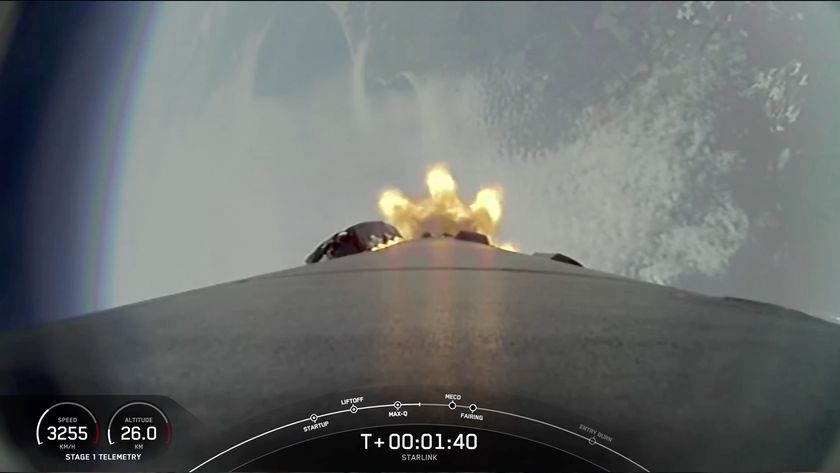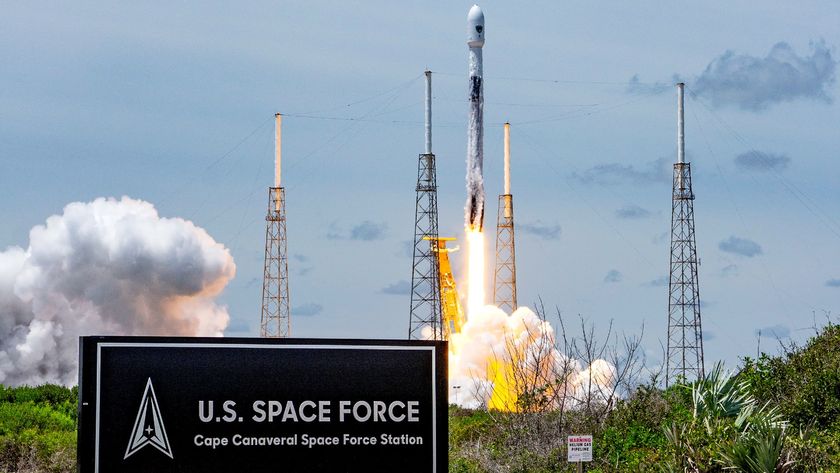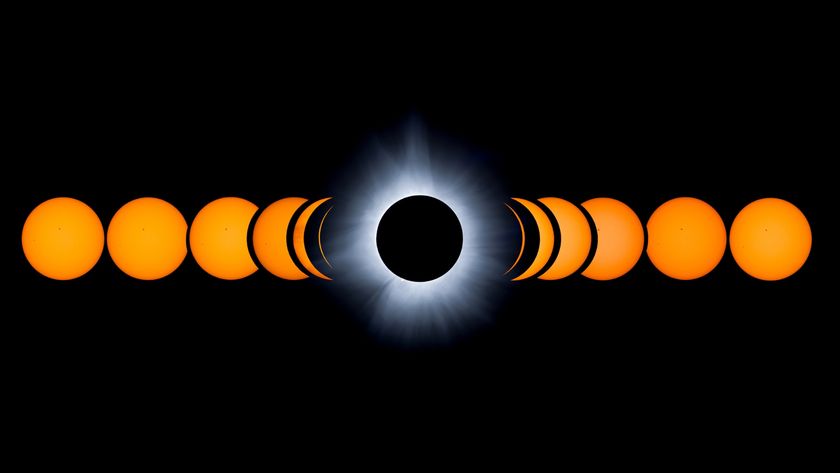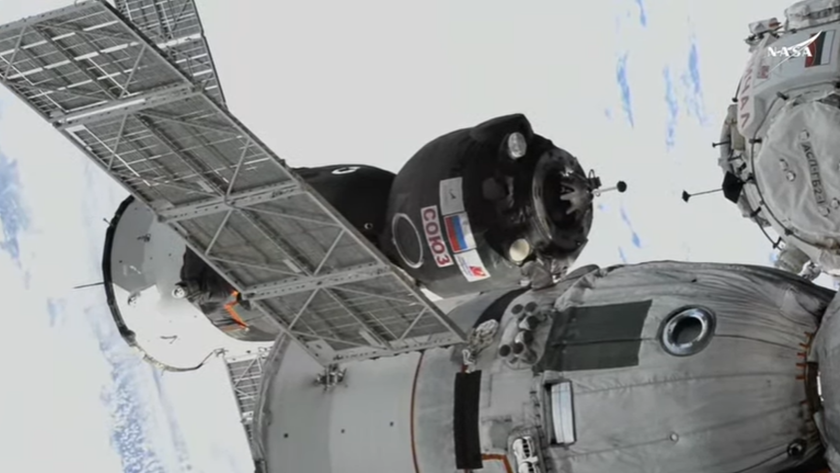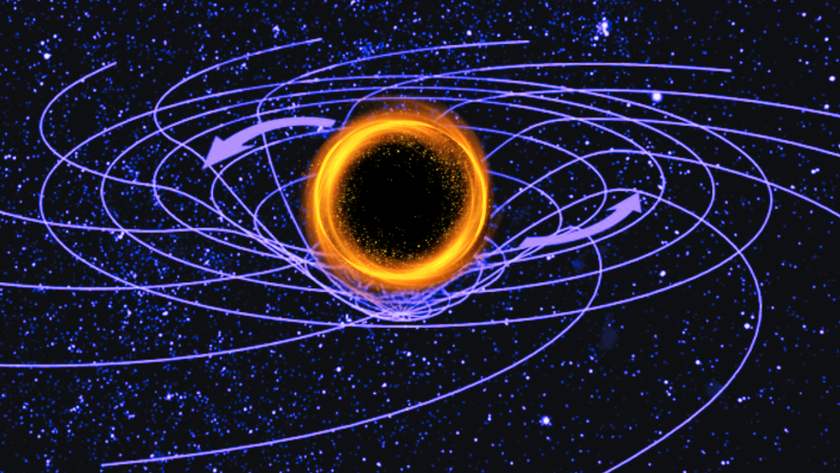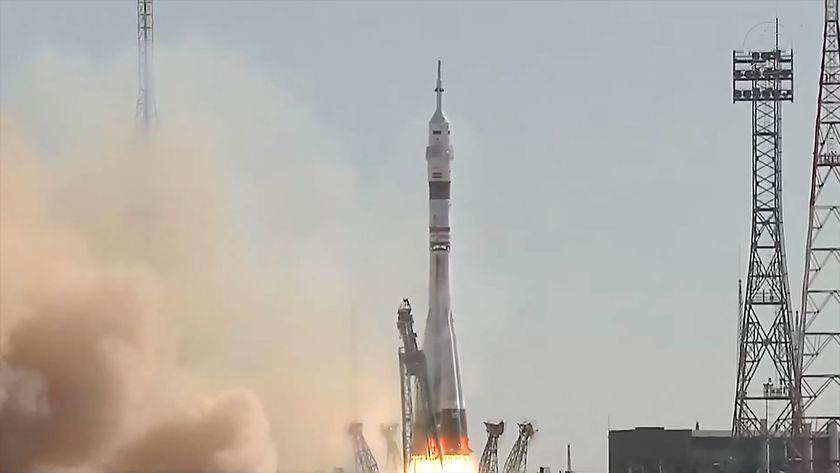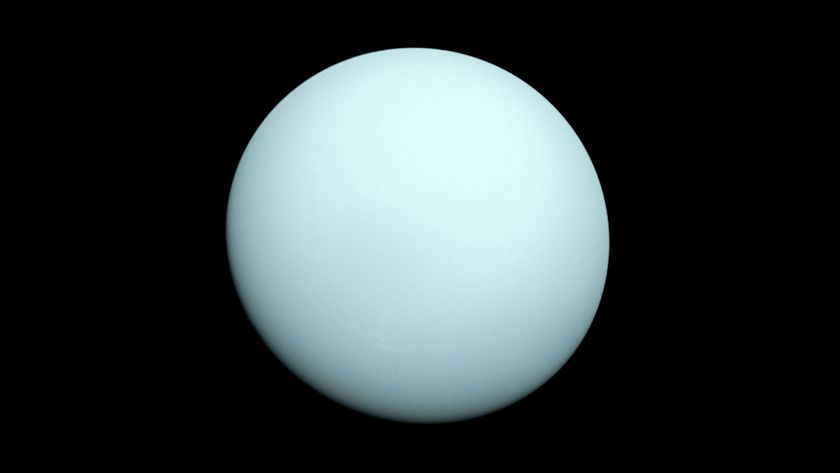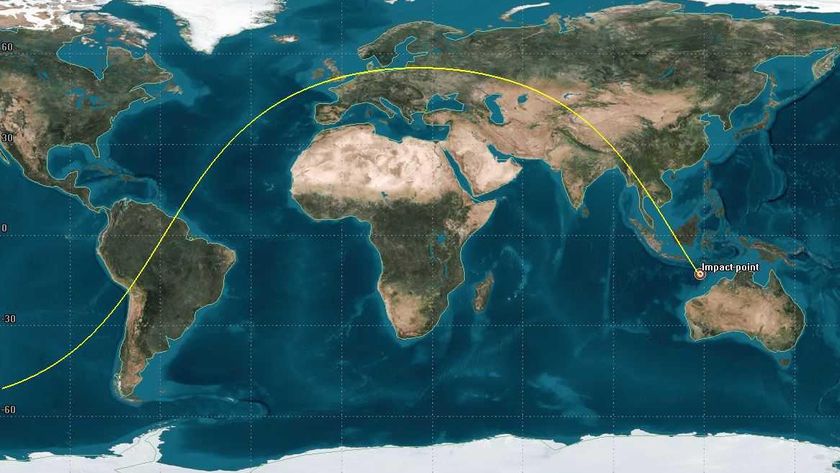A Real Mess in Orbit: Space Junk to Hang Around Longer Than Expected

This story was updated at 6:27 p.m. EDT.
Space junk continues to clutter the friendly cosmic skies, posing threats to satellites and spacecraft, with scientists working to identify which bits of orbital rubbish to pluck from the heavens first. But a new study suggests they're fighting an uphill battle.
New research on changes in the Earth's upper atmosphere suggests space debris could remain in orbit for longer than expected.
A science team at the U.K.'s University of Southampton has confirmed a long-term change in the Earth's upper atmosphere. This change, a contraction of the Earth's thermosphere, has been attributed to the buildup of greenhouse gases, such as carbon dioxide. The atmospheric compression is keeping satellites — and space refuse — in Earth orbit for added stints of time.
Atmospherics at work
While greenhouse gases cause warming here on Earth, they actually trigger cooling at altitudes where satellites orbit. Cooled air is less dense. Even though air density at these altitudes is only about a billionth of that of the Earth's surface, it still provides sufficient drag to slow down objects in low-Earth orbit (LEO), causing their eventual re-entry.
As the atmospheric density in the thermosphere decreases, however, debris can remain in orbit up to 25 percent longer, said Hugh Lewis, from the university's School of Engineering Sciences.
"The fact that these objects are staying in orbit longer counteracts the positive effects that we would otherwise see with active debris removal," Lewis said.
Get the Space.com Newsletter
Breaking space news, the latest updates on rocket launches, skywatching events and more!
The research team suggests that international efforts to control the growth of space debris may become much less effective in the future if these atmospheric changes continue.
"Our study shows that if we double the number of debris objects we can remove each year, we can get back on track with reducing the debris population. Achieving this target, however, will be challenging," Lewis said.
Similarly, a team of scientists from the Naval Research Laboratory in Washington, D.C., and George Mason University in northern Virginia reports that the Earth's upper atmosphere recently experienced its lowest density in 43 years. [Graphic: Earth's Atmosphere from Top to Bottom]
"An operational consequence of this important new finding is that LEO satellites, including debris, may remain in orbit longer than expected," said John Emmert of NRL's Space Science Division.
Other orbital-debris authorities respond that the effect may be real, but it is very small compared with other effects, for example, normal solar activity. Normal solar variability, they suggest, will drive the final result.
Space trash tender
"This is a story that is not going to disappear anytime soon," warn experts at the website of Launchspace, a training group for space industry professionals in Bethesda, Md.
Launchspace has carried out several surveys and solicited ideas on how to collect space clutter. "Every imaginable and some not-so-imaginable ideas have been suggested. The three most popular suggested devices are magnets, nets and lasers. However, the use of these requires that we overcome some serious challenges," they report.
Both clear-headed planning and hardware are required to capture large "non-cooperative" objects, such as tumbling or fast-spinning leftovers, in orbit. Perhaps a start would be launching a robotic trash tender into an orbit that matches that of a target object. This craft would be controlled by ground personnel.
"However, trash tenders could carry astronauts who can evaluate situations and make real-time decisions. Multi-object collection missions might be more efficient with crewed tenders and result in faster debris removal operations," the Launchspace website explains.
But it also notes: "Clearly, the removal of orbital debris is not going to be easy."
Mass removal
"The prime target objects for active removal would be in altitudes of 900 kilometers [559 miles] — plus or minus 100 kilometers [62 miles] — and in inclination bands near 71, 82, and 99 degrees," said Heiner Klinkrad, head of the European Space Agency's Space Debris Office at the European Space Operations Center in Darmstadt, Germany.
Klinkrad told SPACE.com that the most massive LEO objects are 19 Russian Zenith-2 second stages, each tipping the scales on Earth at 8.2 tons empty mass. All of these are in 71-degree orbits at altitudes of about 522 miles (840 km) altitude.
The highest mass concentration overall, Klinkrad added, is in the vicinity of 559 miles (900 km) at 82 degrees inclination. Roughly 300 tons of space hardware is in an "altitude shell" spread out over some 31 miles (50 km).
Paying now or later
"The key point is that when we start removing large objects, it will take a lot of time and a lot of removals to prevent a few collisions — or else we will have to come up with a better means to pick them," said Darren McKnight, technical director at Integrity Applications Incorporated in Chantilly, Va.
"Unfortunately, once the hazard is unacceptable and the impetus is created for action, it will likely take years for the active debris removal systems to be developed, tested and proven operationally effective," McKnight told SPACE.com. "In addition, it will take even longer for the associated incentive, regulatory, and policy formulations to evolve."
In McKnight's view, debris removal is a "Pay me now or pay me more later" proposition.
"That is where we are right now. There is insufficient hazard for an individual operator to perform debris removal, based on the hazard to an individual satellite. But the overall environmental stability is clearly at a state where continued lack of action will make the problem harder and more expensive to deal with at some point," McKnight said.
Leonard David has been reporting on the space industry for more than five decades. He is past editor-in-chief of the National Space Society's Ad Astra and Space World magazines and has written for SPACE.com since 1999.
Join our Space Forums to keep talking space on the latest missions, night sky and more! And if you have a news tip, correction or comment, let us know at: community@space.com.

Leonard David is an award-winning space journalist who has been reporting on space activities for more than 50 years. Currently writing as Space.com's Space Insider Columnist among his other projects, Leonard has authored numerous books on space exploration, Mars missions and more, with his latest being "Moon Rush: The New Space Race" published in 2019 by National Geographic. He also wrote "Mars: Our Future on the Red Planet" released in 2016 by National Geographic. Leonard has served as a correspondent for SpaceNews, Scientific American and Aerospace America for the AIAA. He has received many awards, including the first Ordway Award for Sustained Excellence in Spaceflight History in 2015 at the AAS Wernher von Braun Memorial Symposium. You can find out Leonard's latest project at his website and on Twitter.
